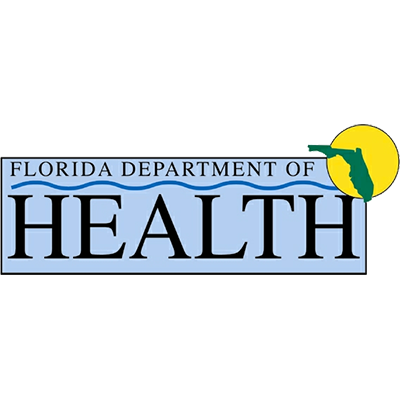Links to other resources: Veterans Program, Medical Detox at Florida Springs
In 2025, the conversation around substance use has shifted in ways that are both alarming and urgent. While opioids like fentanyl continue to dominate headlines and fuel overdose statistics in major urban centers, a quieter but equally dangerous trend has taken hold across many rural areas. That trend is the resurgence of stimulant addiction.
Methamphetamine and cocaine use is climbing, and often, these drugs are being used in combination with opioids. This trend, commonly referred to as polysubstance use, is changing how addiction presents in emergency rooms and treatment centers across the country. For rural Florida, where fentanyl is no longer the only threat, this shift demands attention.
At Florida Springs Wellness and Recovery Center in Panama City, staff are seeing firsthand the effects of this growing crisis. As an addiction treatment provider serving many rural and underserved communities, Florida Springs is uniquely positioned to address stimulant-related addiction through integrated care that meets people where they are and treats more than just opioid use.
The New Polysubstance Crisis
A growing number of overdose deaths involve both stimulants and opioids. According to recent CDC reports, methamphetamine-involved overdose deaths have more than quadrupled since 2015, and many of those deaths now also involve fentanyl. Cocaine-involved deaths have followed a similar trajectory. Unlike past waves of drug use that centered on one dominant substance, the current landscape is increasingly defined by the mixing of stimulants with powerful synthetic opioids.
There are several reasons this is happening. Some individuals use stimulants to offset the sedative effects of opioids, hoping to stay awake or function more normally while continuing to use. Others are unaware that their stimulant supply has been contaminated with fentanyl. The illegal drug market has become unpredictable and deadly, especially for people in rural communities who may not have access to harm reduction education or reliable treatment services.
Why Rural Florida Is at Risk
Stimulant use is rising fastest in rural areas, and Florida is no exception. Research and field reports from across the state show that while urban overdose spikes are still driven largely by fentanyl, rural areas are seeing higher increases in meth and cocaine-related overdoses. The reasons are complex. Poverty, unemployment, social isolation, and limited mental health resources all play a role.
This geographic divide was explored in Florida Springs’ recent blog post, “A Turning Point in Substance Abuse and Recovery“, which noted the sharp rise in stimulant-related deaths in rural regions. Unlike urban centers with multiple treatment and harm reduction options, smaller communities often rely on a single clinic or hospital to meet all their substance use needs. When those systems are underfunded or overwhelmed, people fall through the cracks.
In the Florida Panhandle and surrounding counties, access to high-quality, affordable care can be a lifeline. Florida Springs is one of the few facilities in the region equipped to handle the complex reality of polysubstance addiction, including stimulant use that does not respond to the same treatment protocols as opioids alone.
Treating Stimulant Addiction Requires a Different Approach
Unlike opioid use disorder, there is currently no FDA-approved medication that directly targets stimulant addiction. This means that successful treatment must focus on comprehensive, person-centered care rather than relying on medication alone.
At Florida Springs, patients receive thorough evaluations that go beyond identifying one substance. The medical detox program in Panama City is designed to safely manage withdrawal from both stimulants and opioids, with around-the-clock supervision and medical support. This is especially important for people who arrive at treatment in crisis, unsure of exactly what substances they have used.
Once stabilized, patients can transition to inpatient rehab, where they begin the deeper work of recovery. At Florida Springs, treatment is personalized to meet each individual’s needs. Patients participate in structured therapy sessions that explore the underlying causes of addiction, teach healthy coping strategies, and support long-term behavior change. Group therapy, individual counseling, and family engagement all play a role in helping people build a foundation for lasting recovery.
Florida Springs also emphasizes the importance of a supportive, stigma-free environment where patients feel safe to share their experiences and learn from others. Many individuals struggling with stimulant addiction have also experienced trauma, mental health challenges, or social isolation. Treatment is designed to support the whole person, not just the symptoms of drug use.
Medicaid Access and the Equity Challenge
For many individuals in rural Florida, cost remains the greatest barrier to accessing care. That is why Florida Springs places a strong emphasis on providing services that are covered by Medicaid or other public insurance programs. Medicaid coverage for detox is accepted, and staff are available to help patients determine what benefits they qualify for before they begin treatment.
This approach is essential for closing the treatment gap that exists between rural and urban communities. Addiction treatment in Florida should not be limited to those with private insurance or the ability to travel to major cities. Everyone deserves access to lifesaving care, and that starts with meeting the needs of people where they live.
Looking Ahead: Florida’s Response to the Stimulant Surge
Addressing stimulant addiction in 2025 will require coordinated action at the state and local levels. Funding for rural treatment centers, expanded access to behavioral health professionals, and education about the dangers of polysubstance use are all necessary steps. But perhaps most urgent is the need for providers who are already doing the work to receive the support and recognition they deserve.
Florida Springs has already positioned itself as a leader in this space, offering drug and alcohol detox in Florida that reflects the current reality of addiction. Most patients today present with complex, overlapping substance use histories. By building a program that includes detox, inpatient care, outpatient services, and peer support under one roof, Florida Springs helps patients make real progress in recovery, even when their drug use history does not fit into a single category.
As stimulant use continues to rise, and as fentanyl contamination becomes even more common, treatment centers across Florida will need to adapt quickly. Facilities like Florida Springs are already doing that and saving lives in the process.
Conclusion: A Call for Comprehensive, Rural-Focused Care
The rise of stimulant addiction is not a side story to the opioid epidemic. It is the next chapter, and in many communities, it is already here. For rural Florida, the danger is growing, but so is the opportunity to respond with compassion, strategy, and care that is grounded in science and accessibility.
Florida Springs Wellness and Recovery Center is proud to be part of that response. By focusing on the full spectrum of addiction, including the surge in stimulant use, Florida Springs provides a crucial safety net for patients who might otherwise be overlooked.
Wherever addiction is rising, treatment must rise to meet it.
By Tim Cannon



